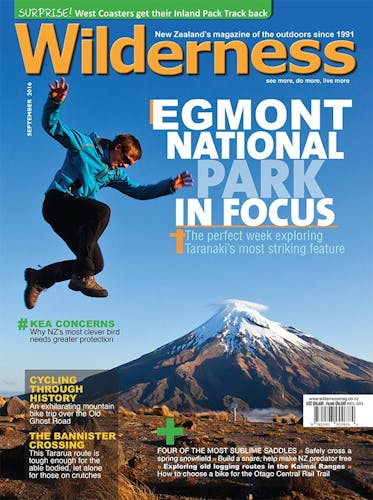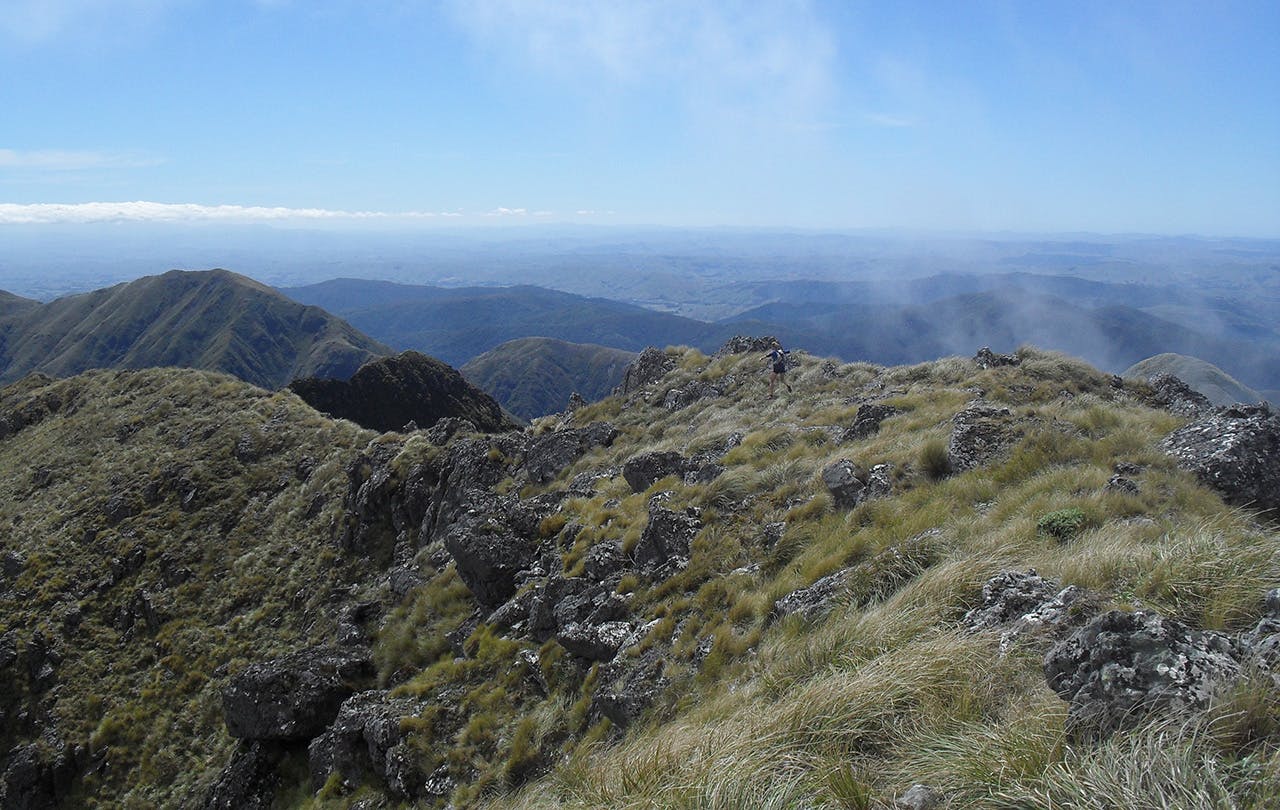Tackling the Tararua’s S-K route is already a feat in itself, but could you do the 80km journey in less than a day?
High in the Tararua Forest Park, there’s a track that for many Wellingtonians is the crown jewel of local tramps. It’s the Schormann to Kaitoke (S-K) traverse, spanning the length of the range at about 80km. But for some, just tramping the S-K isn’t enough. There’s a group that’s taking on the track in record times, and a short list of individuals who have bagged it in less than 24 hours.
Wellington tramper and trail runner Chris Martin set up the Tararua FKT (Fastest Known Time) website several years ago to help organise trampers-turned-runners who craved the challenge. He’s enthusiastic about getting people out to sample the trails, and is a self-proclaimed ringleader among his adventure pals. He also started a group in Wellington called the Big Sunday Run, which now has around 100 members.
The S-K is no walk in the woods, Martin says. “It has every element of a mountain challenge that you could want. The thing that’s magic about it for me is that the route changes the whole way down the range, from rugged ridges in the northern Tararuas that open out to sweeping views of glacial valleys in the central part.”
Many people start the S-K from Putara Road end and run along Dundas Ridge, travel down the southern Main Range and finish with the Southern Crossing. The track has more than 6500m of vertical gain, and is highly exposed on many of the razor-sharp ridgelines.
“We feel like there’s real momentum for this now as a popular route,” Martin says. “It’s a traditional tramping route that’s held dear by Wellington trampers. In the early 60s it was a challenge to leave work early on a Friday night, do the S-K, and try to get back by the Monday.”
The idea to do the S-K was first floated in 1961, when a group of trampers thought it would be fun to traverse the length of the range from north to south in a weekend. They planned to start on a Friday at what was once Schormann Road end and finish Sunday evening at Kaitoke Road end, thus naming it the S-K. Nowadays, Schormann Road no longer exists, so those who attempt it start at the Putara Road end.
Martin has been keeping a list of people who have done the track in less than 24 hours, which isn’t long: just 11 people have managed the feat. The record is held by Chris Swallows, who ran it in 19hr20min in February this year.
For those attempting to do it in less than 24 hours, some backcountry experience is necessary. With rugged terrain and fickle weather, it’s a challenge even for the seasoned tramper. But, Martin says it shouldn’t be a deterrent for people, adding that he’s keen to organise determined trampers who want to attempt the S-K in less than a day.
“I’m enthusiastic in terms of getting like-minded, adventurous people into the outdoors. We’ve got an amazing wilderness out there. We encourage and support each other to do more and more adventures, and because we’re out there a lot, we realise there’s not actually that many people making use of these amazing places.”
By maintaining the Tararua FKT website, he’s hoping to draw new people in and encourage others to attempt it.
“We’re trying to embrace camaraderie by documenting it, publicising it, giving people help with logistics, and getting involved in each subsequent adventure,” Martin says.
Martin, while he hasn’t (yet) done the route in less than 24 hours, has been support crew for others who have done it.
“I get a real buzz out of seeing other people attempt the challenge every summer.” he says. “We’ve got enough people in our community now that we can encourage others to help.”
Martin and Swallows organised an official S-K talk night earlier this year, in which they handed out certificates to those who have completed it in less than 24 hours.
“I feel that this could be the start, where it will live on in perpetuity,” Martin says.
“It would be great for Wellington, great for the mountain community, and great for the Tararuas.”








